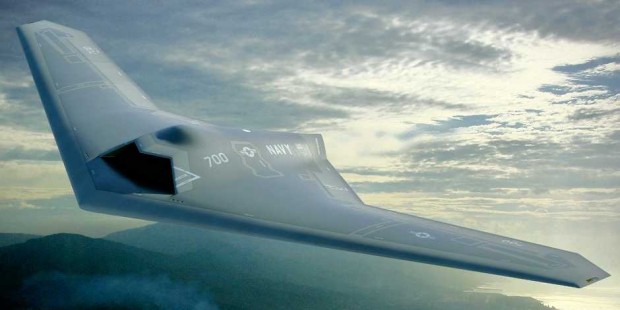Navy Defends UCLASS Goals As Drone Decision Looms
Posted on

Lockheed Martin’s UCLASS concept.
It’s crunch time for UCLASS. On September 10th — after multiple delays — the Pentagon’s top weapons buyer and his Defense Acquisition Board will sit in judgment on the proposed combat drone. The question: how best to bring the robot revolution to the deck of the 90-year-old aircraft carrier.
The “Unmanned Carrier-Launched Airborne Surveillance and Strike” aircraft is most controversial and high-stakes component of the Navy’s multi-front strategy to employ drones alongside– not replacing — traditional piloted aircraft. Land-based, long-range patrols will use the MQ-4C Triton (derived from the Air Force Global Hawk) alongside the manned P-8A Poseidon. Small surface warships like the Perry-class frigate and the Littoral Combat Ship will use the MQ-8C Fire Scout unmanned helicopter alongside SH-60 Sea Hawks. But UCLASS will fly from the Navy’s thousand-foot-long flagships, its nuclear-powered aircraft carriers, multi-billion-dollar ships whose strategic value depends on the planes they carry.
Vocal critics in Congress and quieter ones inside the Pentagon contend that the Navy has dumbed down its specifications for UCLASS, turning it from a robotic stealth bomber into a modestly armed scout drone. Navy officials counter that the design will “be able to grow” from the technically achievable, fiscally affordable scout that enters service ca. 2021 into a high-end war machine.
The Navy hasn’t changed its requirements for UCLASS, it’s just “refined” them to reflect “the art of the possible” given current technology, said Rear Adm. Mat Winter, head of unmanned aviation at the Naval Air Systems Command (NAVAIR).
“We’ve gone back and forth with industry to make sure, ‘is this the art of the possible?,” the admiral told reporters Sunday after flight tests of a prototype carrier-launched drone, the X-47B. “That’s what the last nine months have been [about]. Warfighter requirements for UCLASS have been stable since April 2013, when the Chief of Naval Operations signed the CDD [Capability Development Document]. The design requirements have been continually refined to ensure that we had a technically feasible solution.” (Emphasis mine).
Everyone wants to give the warfighters the best technology they can, but “we don’t want to provide something to industry that we technically can’t accomplish,” Winter went on. “Survivability, payload, and endurance” form an “iron triangle” of inevitable tradeoffs, he said. (The Navy’s desire for a fuel-efficient UCLASS with big gas tanks to do long reconnaissance patrols, in particular, wars with maximizing bombload, speed, and stealth for strike missions).
“There’s a requirement to operate UCLASS in a permissive environment” — that is, one without an anti-aircraft threat — “but be able to grow to a non-permissive [one]” where it needs high-end stealth and other countermeasures to avoid detection and destruction, Winter said. “Engineers have got turn that into, what, frequency spectrums and threats and squeaks and beeps, because we’ve got to be able to truly quantify what that is. ”
The four companies with UCLASS development contracts — Boeing, Lockheed Martin, Northrop Grumman, and Predator manufacturer General Atomics — have been providing feedback on a (non-public) draft Request For Proposal since April. Now a revised and final RFP is ready to go.
“We are on the precipice now of releasing that RFP to the four vendors,” Winter said, “pending final senior Department of Defense discussions and final approval, which is now scheduled to occur over the next three weeks.” (“On the precipice” may be Freudian slip given the high-level scrutiny and anxiety over the program). That final RFP, like the draft, will not be made public until the contractors have submitted their proposals sixty days later, sometime around Thanksgiving.
If the program proceeds on schedule, Winter said, the “early operational capability” (EOC) version of UCLASS will be in the fleet by 2021. “It’ll be a basic capability with a sensor package,” he said. Then, over the next four years, the Navy will try out the new drone in both exercises and real-world deployments to figure out how best to use and refine the new technology.
So flying a fully operational combat drone from Navy carriers is a matter of a decade or more. The decisions made this fall, however, will set the trajectory of that long journey.
My thanks to the US Naval Institute’s Sam LaGrone for sharing his audio recording of Rear Adm. Winter’s remarks.
Subscribe to our newsletter
Promotions, new products and sales. Directly to your inbox.
